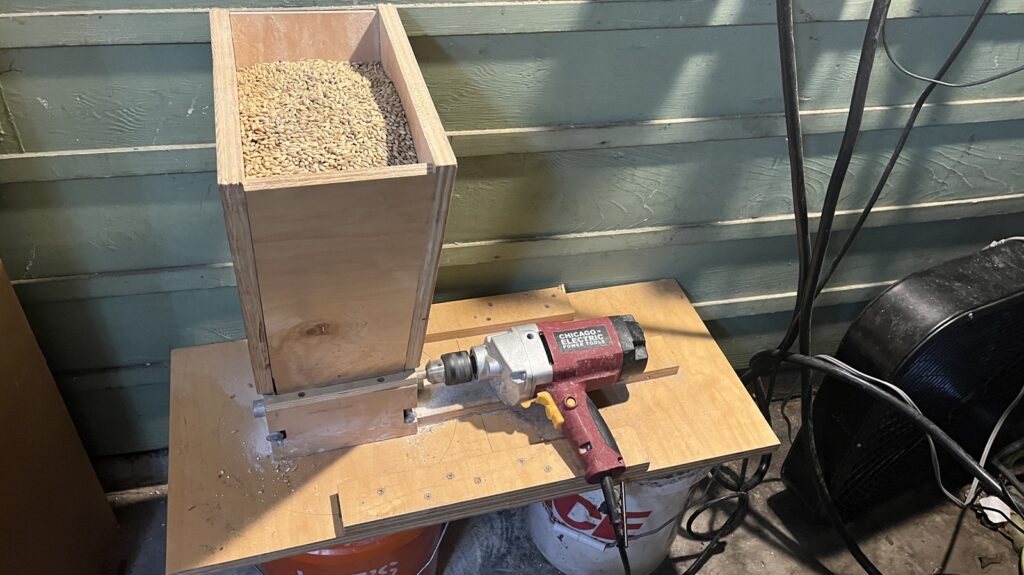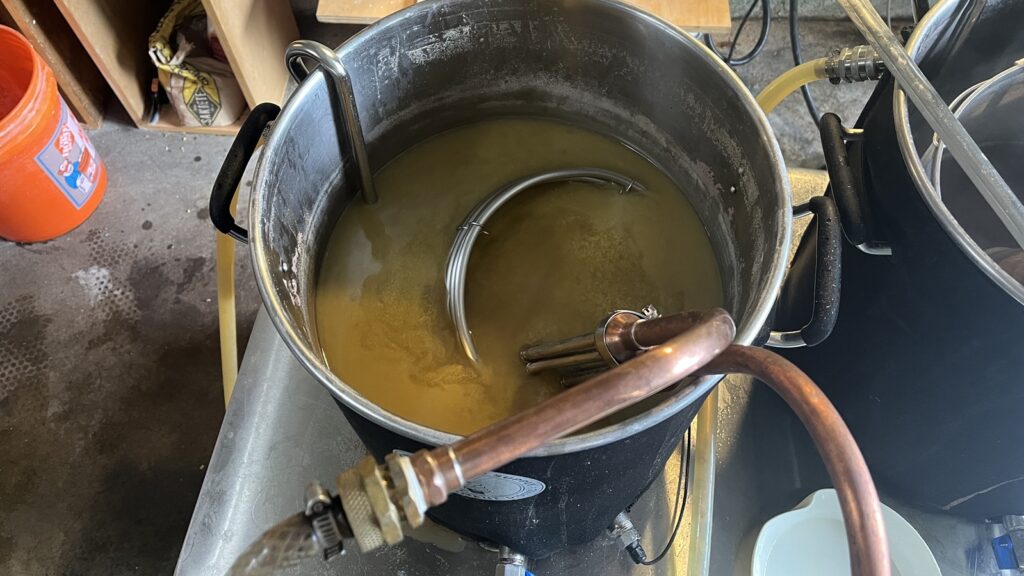Author: Jordan Folks
Although few rarely spell out what the initialism “IPA” stands for these days, the moniker for America’s most popular craft beer style is a reference not only to its origins, but arguably the type of yeast used to ferment it. In general, India Pale Ale is a pale colored, hop-forward, relatively strong beer made with a top-fermenting yeast of the Saccharomyces cerevisiae species at warmer temperatures, resulting in a finished product with varying levels of fruity esters.
As the popularity of IPA began to skyrocket over the last couple decades, inventive brewers began taking their own creative liberty with this style, opting to disregard certain traditional ingredients, like Crystal/Caramel malts, while integrating others intended to accentuate the clean hop character modern examples are known for. One example of this involves the use of bottom-fermenting yeasts traditionally used to ferment lager styles (Saccharomyces pastorianus), which are typically fermented cooler as a way to restrain fermentation character.
Indeed, the rising use of lager yeasts to ferment modern IPA can be seen in the advent of sub-styles such as IPL (India Pale Lager) and Cold IPA, which continue to confuse some brewers. Regardless, inspired by incredible beers from breweries like Highland Park, Ghost Town, and Firestone-Walker, I recently made the switch from the classic American “Chico” ale yeast, which was my go-to for years, to the popular Weihenstephan lager yeast when making West Coast IPA, and it seems to have have the intended effect – cleaner fermentation with more hop pungency. Wanting to gain a more objective perspective on the differences caused by these different yeast strains, I designed an xBmt to test it out.
| PURPOSE |
To evaluate the differences between a West Coast IPA fermented at the same temperature (60˚F/16˚C) with either Imperial Yeast A07 Flagship or Imperial Yeast L13 Global.
| METHODS |
Drawing on what hops I had on-hand, I designed a West Coast IPA recipe for this xBmt that was based off of past successful batches. Big thanks to F.H. Steinbart for hooking me up with the malt for this batch!
Still Come Clean
Recipe Details
| Batch Size | Boil Time | IBU | SRM | Est. OG | Est. FG | ABV |
|---|---|---|---|---|---|---|
| 5.8 gal | 60 min | 69.7 | 4.3 SRM | 1.058 | 1.007 | 6.69 % |
| Actuals | 1.058 | 1.007 | 6.69 % | |||
Fermentables
| Name | Amount | % |
|---|---|---|
| Pilsner Malt | 11.75 lbs | 72.31 |
| Wheat Malt | 3.25 lbs | 20 |
| Table Sugar | 1.25 lbs | 7.69 |
Hops
| Name | Amount | Time | Use | Form | Alpha % |
|---|---|---|---|---|---|
| Warrior | 11 g | 60 min | Boil | Pellet | 14.4 |
| Citra | 14 g | 20 min | Boil | Pellet | 12.1 |
| Nectaron | 113 g | 10 min | Aroma | Pellet | 10.4 |
| Citra | 57 g | 10 min | Aroma | Pellet | 12.1 |
| Nectaron | 113 g | 2 days | Dry Hop | Pellet | 11 |
| Citra LUPOMAX | 57 g | 2 days | Dry Hop | Pellet | 18 |
| Strata | 28 g | 2 days | Dry Hop | Pellet | 12 |
Yeast
| Name | Lab | Attenuation | Temperature |
|---|---|---|---|
| L13 Global OR A07 Flagship | Imperial Yeast | 77% | 46°F - 55.9°F |
Notes
| Water Profile: Ca 103 | Mg 4 | Na 10 | SO4 183 | Cl 44 |
Download
| Download this recipe's BeerXML file |
A couple days ahead of time, I prepared starters for both yeasts to achieve my target pitch rate of 1 million cells/mL/° Plato.
After collecting the full volume of filtered tap water for two 5 gallon/19 liter batches, adjusting each to the same desired profile, and getting them heating up, I milled the grains.
When the water was properly heating, I incorporated the grains then set the controllers to maintain my desired mash temperature of 147°F/64°C. During the mash rests, I weighed out the kettle hop additions.
Once the mashes were finished, I collected the worts and proceeded to boil them for 60 minutes, adding hops at the times listed in the recipe.
When the boils were complete, I quickly chilled them with my JaDeD Brewing SS Coil Hydra.
Refractometer readings indicated a very slight difference in OG between the worts.

After transferring identical volumes of wort from each batch to sanitized fermentation kegs, I decanted equal amounts of supernatant from each starter then pitched the remaining yeast. The beers fermented at 60°F/16°C for three days before I raised the temperature to 62°F/17°C and left them alone for another week. I then raised the temperature to 65°F/18°C, added the dry hop additions, and left the beer alone for another 24 hours before taking hydrometer measurements showing a minor difference in FG.

Following an overnight cold crash to 32°F/0°C, I pressure-transferred the beers to CO2 purged serving kegs along with gelatin fining then placed them on gas in my keezer. After a week of cold conditioning, the beers were carbonated and ready for evaluation.

| RESULTS |
A total of 26 people of varying levels of experience participated in this xBmt. Each participant was served 1 sample of beer made with Imperial Yeast L13 Global and 2 samples of the beer made with Imperial Yeast A07 Flagship in different colored opaque cups then asked to identify the unique sample. While 14 tasters (p<0.05) would have had to accurately identify the unique sample in order to reach statistical significance, only 9 did (p=0.52), indicating participants in this xBmt were unable to reliably distinguish a West Coast IPA fermented with Imperial Yeast L13 Global from one fermented at the same temperature with Imperial Yeast A07 Flagship.
My Impressions: Out of the 5 semi-blind triangle tests I attempted, I correctly identified the odd-beer-out 4 times. Admittingly, it took a lot of focus, but to my palate, the beer fermented with A07 Flagship had a slightly sharper flavor, while the one fermented with L13 Global had a slightly cleaner finish, plus it was also noticeably clearer. While both beers were great, I preferred the one made with Global.
| DISCUSSION |
The type of yeast brewers choose to use is often determined by the style they’re making, and this is particularly true when it comes to ales and lagers, hence the reason we refer to S. cerevisiae as “ale yeast” and S. pastorianus as “lager yeast.” However, recently, some have taken to fermenting modern hoppy styles with lager yeasts in order to further reduce the esters associated with ale yeast while amplifying hop character. Interestingly, tasters in this xBmt were unable to reliably distinguish a West Coast IPA fermented with Imperial Yeast L13 Global from one fermented at the same temperature with Imperial Yeast A07 Flagship.
Purportedly sourced from Sierra Nevada Brewing Company, A07 Flagship is Imperial Yeast’s “Chico” offering, which is known to be a very clean fermenter that allows other beer characteristics to shine. It’s possible this explains the results of this xBmt – any differences caused by the different yeasts was simply negligible enough to be hidden by the hoppiness of the beer.
This was one of those rare, and somewhat uncomfortable, times where my personal performance didn’t match the blind taster data. While I did my best to suspend bias while taking my triangle tests, there’s a chance that played a role here, and regardless, these beers were far more perceptibly similar than they were different. My preference was for the beer fermented with L13 Global, in part because I perceived it as having a slightly cleaner finish, but also because the beer ended up being clearer than the one fermented with A07 Flagship. It’s for these reasons I’ll continue fermenting my West Coast IPA with L13 Global, and I look forward to seeing how other lager strains due when used in the same capacity.
If you have any thoughts about this xBmt, please do not hesitate to share in the comments section below!
Support Brülosophy In Style!
All designs are available in various colors and sizes on Amazon!
Follow Brülosophy on:
FACEBOOK | TWITTER | INSTAGRAM
If you enjoy this stuff and feel compelled to support Brulosophy.com, please check out the Support page for details on how you can very easily do so. Thanks!


















10 thoughts on “exBEERiment | Yeast Comparison: Imperial Yeast L13 Global vs. Imperial Yeast A07 Flagship In A West Coast IPA”
This is pretty wild. I’ve done 34/70 vs US05 in a blonde/lager before and that was ridiculously easy to tell apart, but I’ve never used any Imperial yeast so can’t comment on these strains. Great experiment!
<<>>
I’m not sure this actually works. Unless you are The Man With Two Brains.
“While I did my best to suspend bias”
I’m not sure this actually works. Unless you are The Man With Two Brains.
See it this works better…
“While I did my best to suspend bias…”
I’m not sure this actually works. Unless you are The Man With Two Brains.
Hello! Just curious about the table sugar. When do you add that? Brewfather seems to think it should be added with 10 minutes left in the boil. I just brewed a very similar recipe and included the sugar at the beginning of the boil, but then noticed that I was supposed to add it with 10 minutes left. I’m sure it won’t be a big deal but just curious what you do. Thanks!
In theory it impacts AA utilization, so I would recommend programming your Brewfather recipe according to when you add it so IBUs are more accurately predicted. But at the end of the day I don’t think it really matters when you add it. Sometimes I add at beginning of boil, sometimes at end.
Thanks Jordan. I only do a 30 minute boil so I’m not expecting it to have a huge impact. With that said, I will make the adjustments in Brewfather next time.
I brewed it a few days ago and it’s fermenting right now. I pressure ferment in a corny keg and have an old mini fridge I use for temperature control. I have the pressure set at about 8 psi right now and the temperature at 15 Celsius. I have my mini fridge in a shed out back and the whole shed smells like sulfur. Did you find that Global kicks off a lot of sulphur during fermentation? I’m just concerned that I might end up with a sulphur bomb beer.
Global will kick off sulphur during fermentation, but it will blow off at that temp. However, I’d be a bit worried about capturing it via pressurized fermentation- so for these hoppy styles, I’d take off the spunding valve and just ferment with a blow off
Great, informative work as always, Jordan!
It leaves me with a question, “Is this really a function of low-temperature fermentation of Ale strains?”
I think 16ºC is kinda low for ales, defs what I would call a “hybrid” fermentation temp (I would tend to pitch 1 mill cells/ºP rather than 0.75 mil cells/ºP at those temps). I know of commercial brewers (who make great beer) that ferment their 34/70 lagers at 15ºC.
An interesting experiment would be around 18-20ºC. Fermentis (https://fermentis.com/en/news/fermentation/rediscover-saflager-w-34-70/) seems to imply that 34/70 stays pretty consistent, even at 20ºC.
It would add another interesting data point
(The reason I’m talking about Fermentis is that Imperial isn’t available where I live so haven’t researched them as much)
So in essence you made an experiment comparing an IPA and an IPL that use the same grains and hops.
I’d say, if anything, this highlights how clean the Chico strain is for an ale yeast.